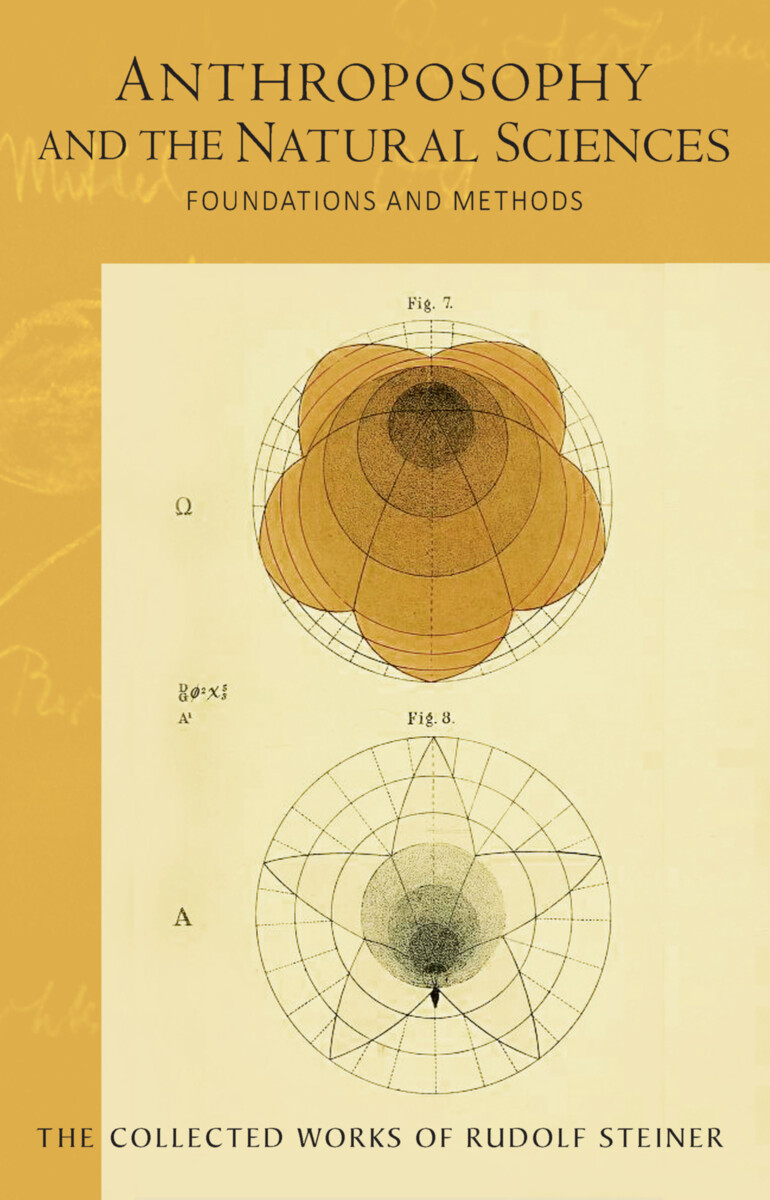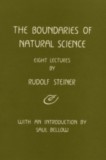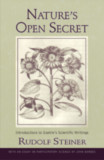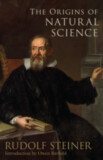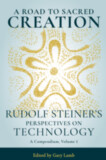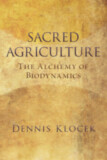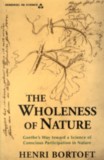Anthroposophy and the Natural Sciences
Foundations and Methods (CW 75)
- Publisher
SteinerBooks - Published
19th October 2021 - ISBN 9781621481850
- Language English
- Pages 300 pp.
- Size 6" x 9.25"
5 public lectures and an evening discussion, various cities,
June 17, 1920 – May 11, 1922 (CW 75)
This previously untranslated volume in The Collected Works of Rudolf Steiner showcases Rudolf Steiner presenting the key concepts and methods of spiritual science to more or less skeptical academic audiences in the early 1920s. Step by step, he presented to his listeners the fundamentals of the anthroposophic path of knowledge. Steiner was less concerned with presenting results from his spiritual–scientific research than with leading his academic audience to an objective understanding of spiritual science in a propaedeutic, conceptually transparent way. The central questions of his approach were:
What are the tools and instruments required to orient oneself in the world of the soul and the spirit?
How can we know that the spiritual world is an objective world and not merely a psychic projection?
What authorizes the spiritual researcher to acknowledge what he has experienced “on the other side” as a reality that is independent of him?
Rudolf Steiner addresses these and other questions in such a structured and readily comprehensible way that the volume as a whole is well suited, both as an introductory text and as a means for anyone to deepen their understanding of how anthroposophy relates to and builds upon the natural sciences.
At the time these presentations were given, serious voices had been raised denying Steiner’s scientific credibility and denouncing his methods as unsound. Partly in response to such criticisms, Steiner here describes a means by which human beings can gain, through methodical and rigorous training, a direct experience of the spiritual dimension of life. He lays out the methodology of spiritual science, which is rooted in the scientific approach, outlining the three stages of higher knowledge—imagination, inspiration, and intuition—and describing the inner processes that lead from intellectual thinking to these higher modes of cognition.
Ultimately, what Steiner proposes is not a deviation from the natural sciences but their expansion and development beyond unnecessary boundaries—that is, the establishment of anthroposophical spiritual science as a recognized method and practice of scientific research.
This book is a translation from German of Das Verhältnis der Anthroposophie zur Naturwissenschaft, 1st edition (GA 75, Rudolf Steiner Verlag, Dornach, Switzerland, 2010).
C O N T E N T S & S Y N O P S E S
Introduction by Wolfgang Zumdick
PART I
Spiritual Science, Natural Science, and Technology (STUTTGART, JUNE 17, 1920): Characteristic forms of spiritual-scientific research methods. Experiencing the spiritual in its concrete form through perceiving consciousness. Transformation of the configuration of the soul of the human being in the course of the development of humanity. Transition from mere observation of nature to the grasping of nature through experimentation. The desire for knowledge of natural science connected with the desire to copy nature. The soul’s understanding of technology. The developing of a one-sided technological consciousness in the pragmatism of American philosophy. The new technological experience as preparation for pure experience of spirituality.
Anthroposophy: Its Essence and Its Philosophical Foundations (BERN, JULY 8, 1920): Anthroposophy and the question of the conscience of our time. Transformation of the entire human soul life as a requirement for researching the world. The boundaries of the knowledge of nature as the first point of connection. The attempt of conventional philosophy to go beyond these boundaries through intellectual methods. The fundamentally different approach of anthroposophic spiritual science. Meditation and concentration as one aspect of spiritual- scientific research. About the characteristic of the meditation exercises and their results. The illusory nature of the usual mysticism as the second point of connection. Individual training as the other side of this spiritual-scientific method of research. Knowledge of nature and self-knowledge as both pillars of human knowledge. Considering the soul-spiritual as the essential aspect of the scientific. The grasping of human nature through the development of an understanding for the spiritual, soul, and bodily nature of the human being. Steiner’s years-long fight against Kant’s system. The transitory nature of matter and force. The necessary birth of a new spiritual life. The appeal to the will of each individual. The task of today’s youth.
PART II
Natural Science and Anthroposophy (ZÜRICH, JUNE 4, 1921): The natural-scientific method as starting point for Anthroposophy. Fundamental elements of a natural-scientific worldview. Insufficient prerequisites for the understanding of human freedom. The example of Franz Brentano and his psychology. Pure thinking as prerequisite for experiencing freedom. The experience of a non-reality from the example of “I think, therefore I am not.” The extent to which the opposite statement from René Descartes is based on an error. Meditation based on the view of the anthroposophical method of research. Imaginative insight as conscious creating of pictures or images. The attempt to attain the reality of the spiritual world. From imaginative on through inspirational to intuitive consciousness. The extent to which an optimistic view of the world is justified. The difference between imaginative ideas or pictures and hallucinations. Mystical experiences as a reflection of bodily processes. The knowledge of the inner nature of matter through Anthroposophy. The agnosticism of modern spiritual life as a hindrance to research; the intentions of Anthroposophy.
Disputation Evening: On Natural-Scientific Questions (ZÜRICH, JUNE 4, 1921): Without pain, no knowledge. Development of free thinking as necessity for avoiding social decline. The flight from real life. The threefold suffering of Nietzsche in relation to the development modern times. The inaccessibility of the pantheistic talk of spirit. Demand for the transformation of spiritual knowledge into the concrete. Finding a practical way into the artistic and the social through Anthroposophy. Expressionism and Futurism. The inability of Goethe to break through entirely into the spiritual. The personal life as starting point. Basis for the emphasis on human preexistence through Anthroposophy. Vaccinations. The principal of good or proper comprehension as prerequisite for the success of a meditation. A radical error of the present time: the view of the prerequisite of brain activity for all spirituality. The human being as a citizen of the cosmos.
PART III
Anthroposophy and Science (BASEL, NOVEMBER 2, 1921): The special methods of knowledge of Anthroposophy. Imaginative consciousness as the first stage of higher knowledge. Inner pictorial thinking in contrast to ordinary abstract thinking. The unsatisfactory state of today’s psychology. On the relationship of thinking, feeling, and willing. The arbitrariness of subjective willing in the thought life. Its replacement by the objective willing that lives in sense perception. The objective character of imaginative thinking. The document by Heinrich Schramm as an example characteristic of a mathematical worldview. The pessimism of Edouard von Hartmann and the fight against it by Steiner in The Philosophy of Freedom. The “thinking in forms” by Goethe. The legitimacy of abstract thinking for the inorganic world. For the organic world thinking in forms is necessary. The image of one’s own life from birth to the present time as a result of imaginative perception. The second stage of suprasensory knowledge: the inspirational consciousness. Insight into one’s own spiritual nature. The third stage of suprasensory knowledge: intuitive consciousness. Seeing the working of the spiritual world. Bringing world knowledge out of true knowledge of the human being as a central desire of Anthroposophy. Concerning the objection to autosuggestion in the document by Albert Sichler. The principle of the wrong polemics against Anthroposophy. Agreement between science and Anthroposophy. The usual views on the origin or beginning of the Earth and on the end of the Earth. The brain as foundation of thinking and not its cause. Continuous death processes in the human being. Moral values as real seed of the future.
Agnosticism in Science (LEIPZIG, MAY 11, 1922): Part 1: Concerning agnosticism in scientific thinking. Comments on Kant’s statement that in science there is only as much science to be found as there is mathematics in it. Phenomenalism as scientific method of research and how natural science undermines its own a priori. Agnosticism as logical consequence of phenomenalism. The catharsis of Greek tragedy as healing and health process for the soul. In the Middle Ages, human beings did not see the mathematical in nature but rather the moral. The Philosophy of Freedom as the effort to bring the moral law out of the suprasensory world, just as natural science brings it out of nature. Part 2: Thinking as starting point for inner development. On body-free thinking and the perception of the body as object. Body-free, imaginative thinking as pictorial metamorphosing thinking. The human life and space-and-time organism. The past as the present. Imaginative knowledge grasps the Urbild (archetype) of the plants. What Anthroposophy adds to natural-scientific agnosticism. Inspirational knowledge. Thinking as destructive process. Pathology and therapy. Overcoming medical agnosticism. Inner transformation through the conscious willing and enlivening of the soul-spiritual existence through intuitive knowledge. Overcoming social agnosticism.
AppendixName Index
Rudolf Steiner
Rudolf Steiner (b. Rudolf Joseph Lorenz Steiner, 1861–1925) was born in the small village of Kraljevec, Austro-Hungarian Empire (now in Croatia), where he grew up. As a young man, he lived in Weimar and Berlin, where he became a well-published scientific, literary, and philosophical scholar, known especially for his work with Goethe’s scientific writings. Steiner termed his spiritual philosophy anthroposophy, meaning “wisdom of the human being.” As an exceptionally developed seer, he based his work on direct knowledge and perception of spiritual dimensions. He initiated a modern, universal “spiritual science” that is accessible to anyone willing to exercise clear and unbiased thinking. From his spiritual investigations, Steiner provided suggestions for the renewal of numerous activities, including education (general and for special needs), agriculture, medicine, economics, architecture, science, philosophy, Christianity, and the arts. There are currently thousands of schools, clinics, farms, and initiatives in other fields that involve practical work based on the principles Steiner developed. His many published works feature his research into the spiritual nature of human beings, the evolution of the world and humanity, and methods for personal development. He wrote some thirty books and delivered more than six thousand lectures throughout much of Europe. In 1924, Steiner founded the General Anthroposophical Society, which today has branches around the world.


